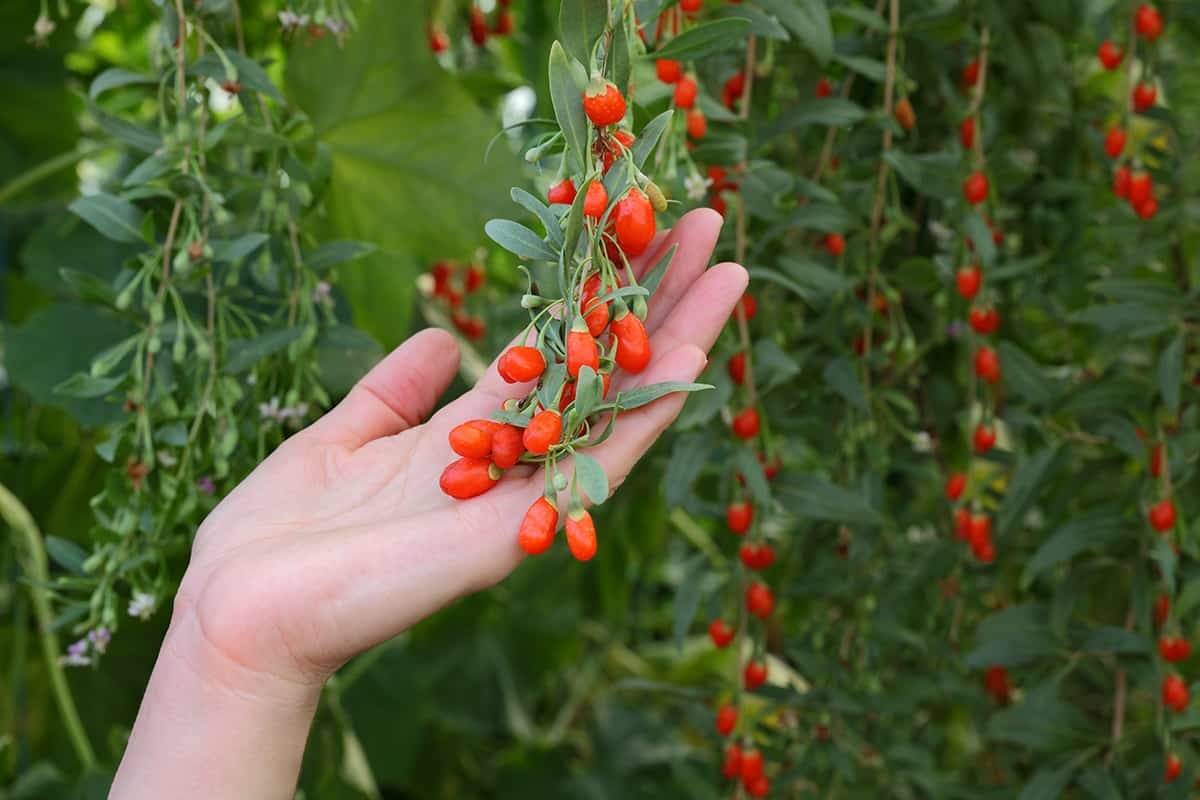
The goji berry (Lycium barbarum and Lycium chinense), commonly referred to as the wolfberry, is a fruiting berry shrub native to Asia that grows on two closely related cultivars of the nightshade family.
These reddish-orange berries are a well-known superfood that is used in many Asian recipes. Superfood status for the goji berry dates back to the third century C.E., where it was served as a crucial component of Chinese, Japanese, Korean and Vietnamese medicine in addition to serving as a culinary item.
Goji berries that have been dried are frequently used as a smoothie component, topping or snack.
A Guide to Grow Goji Berries at Home
Goji berry plants can be grown from seeds, but it will take at least three years for them to bear fruit.
1. Choosing a Location
Goji berries need full light; however, they can take little shade. If you're planting many bushes, space them approximately five feet apart to give the plants time to grow and you more area to work when it comes time to harvest.
2. Prepare the Site
Plants that produce goji berries demand soil that drains well and has a pH of 6.5 to 8.0. Before planting, add a few inches of organic matter, such as compost, to the soil.
3. Trellis
To guarantee that your goji berry plant develops in an upright position, facilitating an easy harvest and adequate airflow, you'll need to erect a trellis. Gently attach the young canes that appear to be the strongest to short wooden pegs, or train them like raspberries along a section of fence.
4. Plant
When the plant is at the end of its dormant season in early spring, plant your bare-root goji berry tree or bush. Place the plant into a hole that is twice as large as the rootstalk, making sure the top of the rootstock is level with the earth. Lay out the roots, add dirt, and then softly push it down to seal.
5. Water
To aid in the establishment of the root system, deeply water the planting area.
Care & Management of Goji Berries
For goji berries to flourish, regular watering, trimming, and insect control are necessary.
Water: Once the roots of goji plants are developed, it becomes more resistant to drought. During the first year, water often and thoroughly to maintain moisture in the young, sensitive roots. To avoid blossom end rot, don't overwater your plants.
Prune: Light trimming of goji berry plants promotes new growth while controlling their size and spread. By improving airflow, pruning can also deter fungi-related illnesses like powdery mildew. Remove any new suckers that have sprung from the main stem or roots, as well as any dead or damaged branches.
Mulch: Mulch should be spread at the base of the plants to control weed growth and soil moisture.
Pest Management: Goji berries are frequently attacked by aphids, thrips, and spider mites. When possible, remove the pest-infested leaves or patches, but you can also practice companion planting or introduce natural predators like ladybugs to ward off pests before using a pesticide. Plant strong, scented herbs like catnip, mint, chives, marigolds, and nasturtium nearby. Just be sure to put spreading plants like mint or nasturtium in a different container. As with other fruit trees, bird netting could come in handy if you notice that birds and other animals are nibbling on your harvest.
Harvesting Goji Berry:
Typically, goji berries mature from July through October. By removing the berries from the stalks, you can get fresh berries. Additionally, you can gently shake the plants to release the berries by laying a cloth or thin netting underneath the bushes.
You can pick the young goji berry leaves for soups or sautés; the leaves have a bitter, grassy taste that is comparable to watercress. Goji berries can be dried and used as an antioxidant-rich component to homemade trail mix or added fresh to smoothies.











